Do you want to set up your calisthenics home gym but don’t know where to start? Don’t worry we’ve got you covered. First, understand what calisthenics is.
Calisthenics is a form of exercise that focuses on using one’s own body weight to exercise. It has plenty of benefits including increased strength, enhanced mobility and effective overall functionality.
Nowadays, In our hectic routines, it can be pretty difficult to spare time for the gym. So, the idea of setting up a calisthenics gym sounds quite amazing. In this blog, we’ll guide you on how to build a calisthenics gym at home.
Before delving into the topic of how how to build a calisthenics gym at home, first, we’ll look into the benefits of calisthenics exercises.
Benefits of Calisthenics:
Strength and Muscle Development: Calisthenics exercises holistically engage multiple muscle groups, fostering overall strength and muscular growth.
Flexibility and Mobility: The kinetic movements inherent to calisthenics serve as catalysts for augmenting flexibility and mobility, thereby amplifying one’s range of motion. By incorporating calisthenics exercises into your fitness regimen you can easily improve your flexibility.
Functional Fitness: Calisthenics revolves around movements that closely mirror real-life activities, thereby heightening one’s proficiency in executing daily tasks with unparalleled efficacy. It is very beneficial in daily household tasks.
Cost-Effectiveness: The realm of calisthenics demands minimal to no equipment, thus emerging as a cost-effective fitness alternative. The memberships of gyms can be quite expensive and many of us can’t adjust it into our budgets. So, calisthenics home gym can be a lifesaver.
Versatility: Countless calisthenics exercises and their variations empower enthusiasts to target distinct muscle groups while progressing at their own pace. There are countless variations of calisthenics exercises that you can use to target different muscle groups.
Things to keep in mind before setting up calisthenics home gym:
Indoor or Outdoor: Contemplate whether you wish to set up your personal calisthenics gym indoors or leverage the expansive potential of an outdoor expanse, such as a backyard or garage. It is the first step towards building a calisthenics home gym.
Both indoor and outdoor home gym has its Pros and Cons. Indoor gyms can protect you from the extremes of weather thus, your workouts wouldn’t be affected by bad weather but you can have some space issues indoors. An outdoor gym like in the backyard is a good idea if you have a confined space in your home.
Ceiling Height: Guarantee that the ceiling encompasses sufficient verticality to accommodate exercises necessitating overhead movements, exemplified by pull-ups and muscle-ups.
Floor Space: Precisely measure the area that you want to build a home gym on. These measurements will give you a rough idea of the equipment that you can fit in that space. Chose the equipment according to it.
Equipment selection:
Choice of Equipment: The choice of equipment for calisthenics home gym isn’t hard as calisthenics focuses on basic bodyweight movements, one only needs to buy basic equipment for calisthenics home gym. A list of this equipment is given below:
Pull-Up Bar: A robust pull-up bar stands as an elemental prerequisite for executing exercises such as pull-ups, chin-ups, and hanging leg raises. It is a must-have equipment for your calisthenics gym at home.
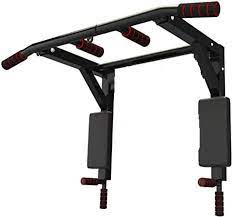
Parallel Bars: Parallel bars offer a great platform for dips, L-sits, and an array of other advanced exercises.
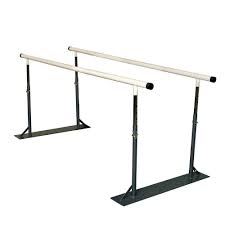
Resistance Bands: By conferring supplementary resistance, these bands emerge as invaluable assets, facilitating assisted pull-ups or dips, among other exercises.
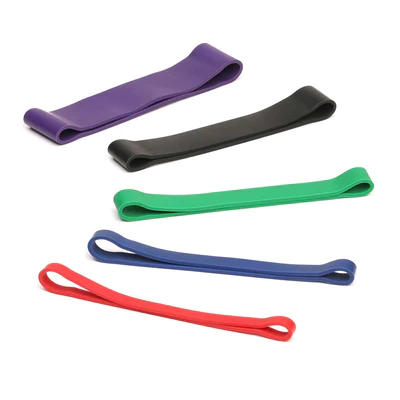
Gymnastic Rings: Exhibiting inherent instability, rings pose an unparalleled challenge to one’s musculature and core during various exercises.
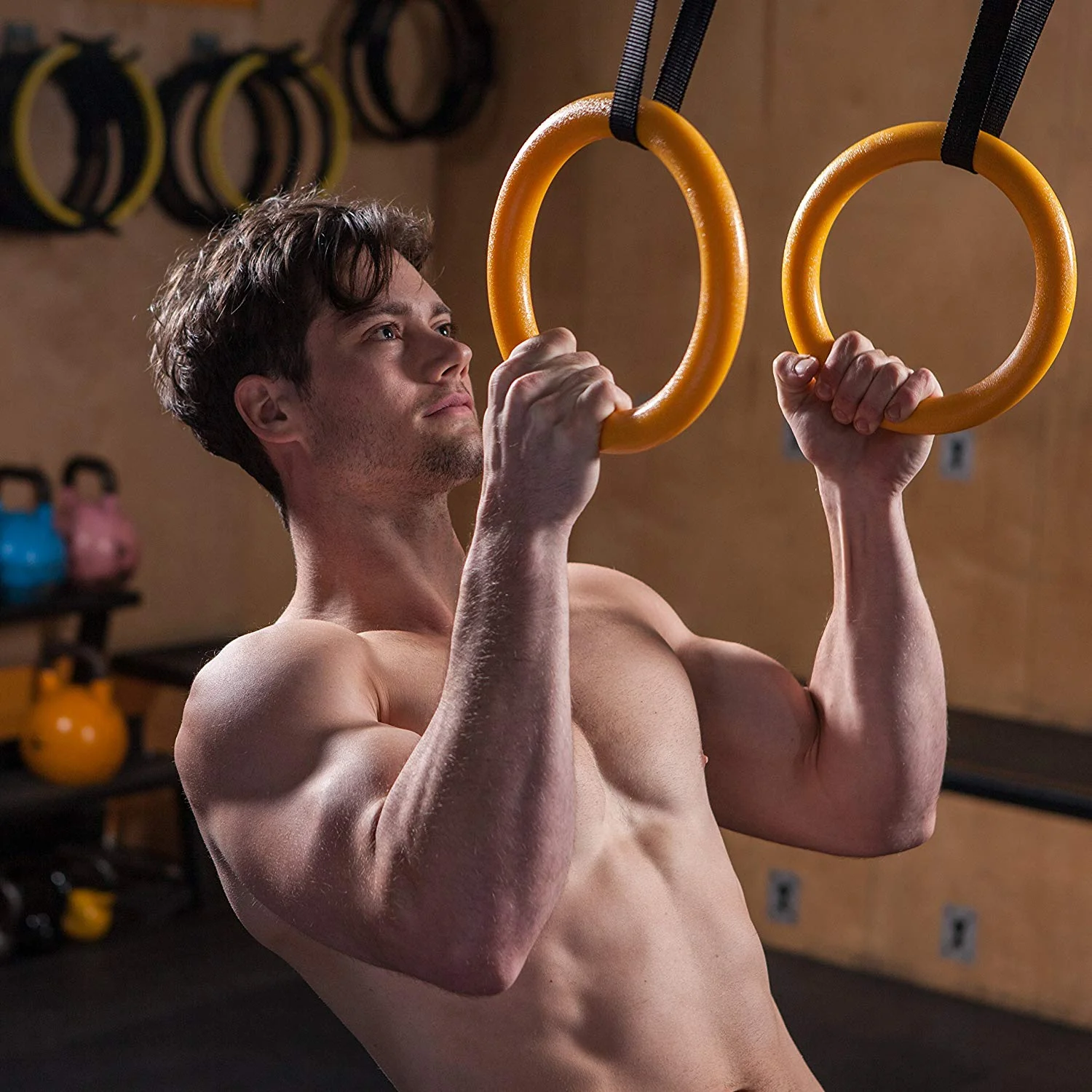
Flooring Options:
The right flooring is important for a safe and comfortable calisthenics gym. Consider the following options:
Rubber Mats:
Exhibiting exceptional shock absorption properties, rubber mats guard against scratches and mitigate the perils of impact upon your flooring. You can add these to your calisthenics gym.
EVA Foam Tiles:
These interlocking tiles provide cushioning, traction, and noise reduction, rendering them the classic complement to indoor gyms. If you want to buy the best EVA Foam Tiles that I Personally use then check out “Best EVA Foam Tiles”
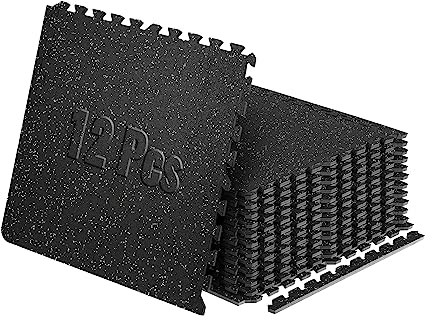
When You Buy Something using our links we may earn a small commission through this with no additional cost to you. That small amount keeps us motivated to bring you the latest content.
Safety Considerations:
When embarking upon the noble endeavour of setting up a calisthenics home gym within the confines of your residence, taking safety precautions is of paramount importance. You need to create a safe and sound environment. Your safety is the priority. Keep in mind the following things for safety:
Secure Anchoring: Ensure that all equipment is securely anchored and can support your body weight. Any faulty or loosely attached equipment should be avoided as it can create a catastrophe any time.
Clear Space: Eliminate any potential hazards or impediments from the workout area to prevent any unwanted accidents. There are lots of cases in which objects like these have causes some serious accidents. So, you should avoid this.
Proper Form and Progression: Prioritize the tenets of maintaining impeccable form while gradually escalating the intensity of exercises, thus, minimizing the chance of any muscular injury.
How to build a calisthenics gym at home:
Now it’s time to set up your calisthenics home gym. The following points will help you to set up your home gym effectively and quickly.
Choosing the Optimal Location: Keeping in mind the above-mentioned Pros and Cons of indoor and outdoor gym and according to your comfort choose either an indoor to an outdoor location.It is the basic and the most important pillar of setting up a home gym because once you set up your equipment it would be unwise to move it as it will keep your mind occupied and you wouldn’t be able to focus on your daily life activities. So, choose carefully.
Installation of Equipment: After choosing the optimal location install the equipment like pull-up bars, parallel bars and gymnastic rings according to the manual of the manufacturing company. Install all the equipment carefully and don’t leave any bolts and nuts loose as it can cause an accident. Proper installation of the equipment is an important part of making sure your safety.
Arrangement of Flooring: Lay down the rubber mats and Rva floor tiles on the floor to provide a safe and seamless workout experience. The cushioning of the tiles will absorb unnecessary forces and keep your workout safe.
Warm-up and Stretching Area:
The importance of a warmup before any physical exercise can’t be neglected. Warmup prepares the body for the forces that you are gonna put on your muscles during the workout. It prepares the joints for activity and increases blood flow in the muscles.
It is crucial to set up a dedicated area for warmup. If you don’t have ample space for that then you can just warm up anywhere you find comfort.
Cardiovascular Warm-up: Start your pre-workout regimen with a medley of activities such as jumping jacks, jogging, or cycling, assiduously augmenting your heart rate and prepping your musculature for forthcoming exertions.
Dynamic Stretching: Enact an ensemble of dynamic stretches that artfully target major muscle groups, priming them for the arduous task that awaits. Foam Rolling: Exploit the potential of a foam roller to alleviate tension and unravel your body’s innate potential for enhanced flexibility in discrete anatomical regions.
Basic Calisthenics Exercises:
Following are the basic calisthenics exercises that you can incorporate into your workout regimen:
Push-Ups: This timeless exercise acutely focuses on the chest, shoulders, and triceps, fostering strength and muscularity.
Squats: A pantheon of lower-body musculature, the squat inscribes the indelible imprints of effort upon your quadriceps, hamstrings, and glutes.
Pull-Ups: The quintessential embodiment of upper body strength, pull-ups holistically engage the back, biceps, and forearms.
Dips: By diligently embracing parallel bars or analogous apparatus, you subject the triceps, chest, and shoulders to the arduous crucible of exertion.
Plank: This steadfast exercise meticulously fortifies the core musculature, conferring resilience upon the abdominals, obliques, and lower back.
You can also try Calisthenics Push and Pull Workouts
Progression and Variation:
As you progress in your calisthenics workouts your body will get strong and you’ll no longer find your exercises challenging. So, it is necessary to add progression and different variations into your workouts to keep gaining muscle and improving your overall fitness. Following are some tips:
Increasing Repetitions: Gradually increase the number of repetitions for each exercise, as long as it feels challenging. If you don’t increase the repetitions you’ll hit a plateau and will not make any progress.
Advanced Variations: Explore advanced variations of exercises, such as one-arm push-ups, pistol squats, or muscle-ups.
Isometric Holds: Incorporate isometric holds, such as static planks or L-sits, to increase muscle endurance and stability.
Tracking Your Progress:
It is crucial to track your workouts and progress in order to progressively overload your muscles. If you are not aware of the idea of progressive overload then watch the following video:
You can use either of the following things to keep a record of your workouts and progress:
Workout Journal: Keep a journal to record your workouts, including exercises, sets, repetitions, and any personal notes.
Measurement and Photos: Take regular measurements and progress photos to visually track changes in your body composition.
Fitness Apps: Utilize fitness apps or wearable devices that allow you to track your workouts, monitor your heart rate, and set goals.
Maintenance and Upkeep of your calisthenics home gym:
The longevity of your equipment depends on maintenance and upkeep. You should maintain the equipment for a longer life. You can do so by:
Regular Cleaning: Clean your equipment and flooring regularly to remove sweat, dirt, and bacteria. When you workout you sweat a lot and your sweat most likely ends up on the floor. It can promote bacterial growth if left uncleaned.
Equipment Inspection: Check the safety and integrity of your equipment regularly to make sure there is no sign of any damage or any wear or tear, If any immediately contact the expert or your equipment provider.
Replacing Worn-out Equipment: Replace any worn-out or damaged equipment to maintain safety during workouts. Damaged equipment may cause some serious accidents.
Safety Tips
To prevent injuries and ensure a safe training environment, keep these safety tips in mind:
- Proper Warm-up: Always warm up your body before starting your calisthenics workout to prepare your muscles and joints.
- Listen to Your Body: Pay attention to any discomfort or pain during exercises and modify or stop if necessary.
- Gradual Progression: Progress at a pace that suits your fitness level and avoid pushing yourself too hard too soon.
- Consult a Professional: If you’re new to calisthenics or have any specific concerns, consult a fitness professional for guidance and instruction.
Conclusion:
To conclude, setting up a calisthenics home gym is a brilliant idea if you have enough budget and ample space. A home calisthenics gym can provide the liberty of working out at home whenever you are free.. By following the steps outlined in this article, you can create a functional and safe space to perform calisthenics exercises. Remember to start with the basics, gradually progress, and prioritize safety throughout your training journey.
FAQs
- Can I build a calisthenics gym in a small apartment?
- Yes, you can set up a calisthenics gym in a small apartment by utilizing compact equipment and optimizing the available space.
- Do I need prior fitness experience to start calisthenics?
- No, calisthenics is suitable for all fitness levels. Start with basic exercises and progress at your own pace.
- What if I don’t have access to outdoor space for a calisthenics gym?
- You can create a calisthenics gym indoors by utilizing doorframe pull-up bars, resistance bands, and portable equipment.
- Can calisthenics help with weight loss?
- Yes, calisthenics exercises can aid in weight loss by increasing muscle mass, boosting metabolism, and burning calories.
- Is it necessary to follow a specific diet for calisthenics?
- While there is no specific diet for calisthenics, maintaining a balanced and nutritious diet will support your overall fitness goals.
Hello, fellow fitness enthusiasts! I'm Zayn, a Board Certified Fitness and Nutrition Coach. My journey started from a personal commitment to fitness, and over time, this passion ignited a desire to help others unlock their potential. I transformed this passion into my profession, and today, I'm proud to say that I am armed with a plethora of certifications, all testament to my dedication and commitment.
When I'm not advising clients or working on my next blog post, you'll find me trying out new fitness regimes, diving into the latest nutritional research, or practicing what I preach with my own healthy lifestyle. My mission is to help you become the best version of yourself, showing that fitness and nutrition are as much about the journey as they are about the destination.


